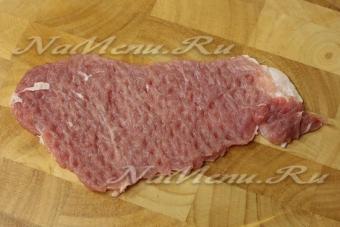Vlasoglav - roundworm from the detachment of nematodes, and the representative of Trichocephalida is called the human whipworm. Once in the body, human whipworm causes symptoms of trichuriasis, and treatment is required.
Outwardly, this worm is thin, it is white or grayish-red in color, has a slightly elongated front part and a thicker, but short, back, where the internal organs are located.
The body length of the female and male whipworm is almost the same and is 3-5 cm, only the male has a tail twisted in a spiral, and the female has the form of a curved arc. 
The eggs are barrel-shaped and yellowish, golden or brownish in color. There are corks at both ends of the eggs - this is how the inner shell, consisting of four layers, is brought out.
The human whipworm penetrates the front of the mucous membrane and feeds on blood, causing anemia and trichuriasis in humans.
Life cycle and reproduction
Vlasoglav is able to produce 2-10 thousand unicellular eggs per day in the human colon. From there they are excreted in the feces. environment and fall into the soil. The eggs stay there for 2-3 weeks, and during this time they are already mature, that is, they contain a larva and are already infectious. 
Three months pass from the moment a person swallows an egg until an individual reaches maturity. If a stool sample is taken at this time, signs of infection may not be seen because the eggs have not yet been produced and hatched. Whipworm lives up to 5 years and all this time the female can produce up to 20 thousand eggs daily.
Whipworm distribution

Symptoms of infection
The main disorders in patients with trichocephalosis are observed from the gastrointestinal tract: lack of appetite, nausea and sometimes vomiting, diarrhea, flatulence, cramping pain in the abdomen, or rather in its right side below, and pain in the stomach. Violation of the stool is a constant symptom of infection, and loose stools cannot be stopped. 
With a weak infection, inflammation of the caecum is observed, and with a strong infection, diarrhea is accompanied by urge to go to the toilet and pulling pains, abdominal pain, and bloody loose stools. Children are at risk of rectal prolapse.
Patients with trichuriasis have weakness throughout the body, they suffer from headaches and sleep disturbances, complain of unexplained aggression, irritability, their weight and performance decrease, and profuse salivation is observed. Children have fainting spells and seizures.
Diagnosis of infection
In order to diagnose trichocephalosis in a patient, you will first need to detect the pathogen in his body. by the most effective method research is the study of feces. The material is taken from the patient in the form of a large smear and examined under a microscope.
When making a diagnosis of trichuriasis, one should pay attention to the epidemiological history, patient complaints, and be wary if there is no proper result from treatment with antibacterial drugs.
Consequences of infection with trichuriasis
If a person has become infected with a whipworm and the doctor has diagnosed him with an unpleasant diagnosis of trichuriasis, treatment should be started immediately, otherwise the disease will lead to serious consequences.
Helminths take a lot of vitamins, glucose and microelements (copper first of all) from the human body. Because of this, the absorption processes established before are disrupted in the intestine. Children with this disease may lag behind in mental development and grow slower than their peers.
The more whipworm in the human body, the more the body is poisoned and the higher the risk of allergic reactions.
The toxins emitted by the whipworm contribute to the disruption of metabolic processes and damage to the nervous and muscle tissues.
If the number of whipworm in the body exceeds eight hundred individuals, then together with the blood they draw out proteins and vitamins from the body, thereby triggering the development of anemia.
Other consequences of infection with trichuriasis are cystic formations, polyps, cancerous tumors, hair loss, impaired menstrual cycle, impotence, miscarriages and infertility.
Treatment for whipworm infection
In what form - inpatient or outpatient treatment of trichuriasis, depends on the degree of infection of the patient. IN mild form the defeat can be cured on an outpatient basis, and with damage to the gastrointestinal tract, liver, kidneys and central nervous system - only in a hospital.
Family members of a person infected with trichocephalosis must undergo an examination - take feces for analysis three times and, if they also have confirmed infection, undergo deworming.
The process of treating trichocephalosis is quite long due to the fact that the whipworm lives in places of the human body that are hard to reach for drugs. The selection of drugs and their dosage should be carried out by the doctor, focusing on the age of the patient and his weight.
» ( late XIX century) is called Trichocephalus dispar.
The female, like many other nematodes, is larger than the male. The length of the male is 3-4.5 cm, the female is 3.5-5.5 cm. The anterior end of the body of the whipworm is thin, hairy, the posterior end is thickened. In the anterior section there is only the esophagus, in the posterior - all other organs. The body color of the whipworm is from grayish-whitish to reddish with transverse striation. It is localized more often in the caecum, sometimes in other parts of the colon or in the lower part of the ileum. Vlasoglav is attached to the intestinal wall with a thin head end of the body. Whipworm eggs are barrel-shaped) shaped, up to 23x54 microns in size, color from light brown to yellowish, covered with a shell.
Whipworm eggs are excreted in the faeces of patients with trichuriasis. While in the soil, under the influence of oxygen and with sufficient air humidity and favorable temperature conditions, whipworm eggs ripen. Human infection occurs by ingestion of mature eggs. Trichuris trichiura with contaminated vegetables, fruits, soil particles. In the small intestine, the egg shell is destroyed and the larva, due to the presence of a stylet, penetrates into the deep layers of the mucous membrane, where it develops for three to ten years, after which the larva enters the intestinal lumen and descends into the caecum, where it stays for a month and a half reaches puberty. The life span of the whipworm in the human body reaches seven years.

Diagnose trichuriasis in the analysis of feces for eggs of worms.
If trichuriasis is detected, the patient is treated, and family members are examined for the presence of whipworm. Follow-up of persons who have close contact with a carrier of whipworm is required for two years. Twice a year, tests are carried out (three times in 15-20 days) and a selective study by the sanitary and epidemiological service of the external environment (soil in the microcenter).
Vlasoglav has the following appearance (it is, by the way, a nematode): a white or grayish-red thin worm, its front end is slightly elongated, the back is thicker, but shorter. In the female whipworm, the end is a curved arc, in the male whipworm, the end is twisted in a spiral type. In size, both sexes of the worm practically do not differ, for the male the characteristic size is 3-4.5 centimeters, and for the female whipworm - 3.5-5.5 centimeters.
Whipworm eggs are yellowish in color, and may also have golden or brownish eggs. Their shape, as a rule, is oval, slightly narrowed towards the ends, there are “plugs” at the poles. Such "plugs" are actually an inner shell that goes out. The eggs themselves are covered with four shells that make up a kind of shell. Egg sizes: from 47 to 55 microns in length and 22 microns in width.
Pathogenesis
When stool is excreted from an infected person, helminth eggs are also released, which enter the water and soil through the sewer, the soil is their habitat. Vlasoglav loves temperatures from 26 to 30 degrees Celsius, prefers high humidity, close to 100%. Under such favorable conditions, worm eggs develop for 18-25 days, after which they become invasive. From this time begins life cycle whiplash. When ingested, an adult whipworm can live up to 5-7 years.
Infection on early stages has mild symptoms or no symptoms at all. If the invasion is quite intense, the symptoms of infection, first of all, concern the gastrointestinal tract, as well as the central nervous system. What symptoms can a patient feel on himself if a whipworm has settled in his body:
- The patient's appetite is significantly reduced, nausea may occur, often ending in vomiting.
- Increased salivation.
- Pain similar to appendicitis. Also, the patient may experience pain in the epigastric region.
- Chair problems.
- Headaches and frequent dizziness.
- Irritability.
- Sleep disorders.
- In rare cases, seizures may occur.
Diagnostic measures
If any symptoms of infection have been found, or invasion is suspected, an early diagnosis is necessary in order to prescribe treatment. The attending physician can make a final diagnosis after carrying out procedures such as:
- Binocular examination of a fecal smear.
- The use of flotation solutions for the detection of helminth eggs
Treatment
The main drug, which is prescribed in the first place, if the human whipworm was found in the body, is Mebendazole (or its analogue Vermox). Treatment with this agent is prescribed to the patient in the following dose: for adults, 100 mg twice a day. Treatment continues for three days.
Also, if whipworm caused infection, Quantrelle is an effective drug, it is prescribed 10-20 mg once. The drug Difezil may be prescribed at a dose of 2.5 mg per day for children under five years of age, 5 mg per day for children over five years of age and adults. The course is designed for 5 days.
Most often, when infected with helminths, treatment is carried out for all family members, but this rule is not suitable if a whipworm was found in the body. Although a mandatory point of treatment is a coproovoscopic examination of the whole family.
a source
The causative agent of trichuriasis is a roundworm, reaching a length of 5 cm (males 4.5 cm). In the front, narrower part of the body is the oral cavity and esophagus, and all other organs (intestinal tube and anus) in the back, wider part. The color of the worm varies from light gray to brown and reddish.
The disease is common in the Central Black Earth region of the country and in the regions of the North Caucasus, as well as in tropical and subtropical climatic zones.
Whipworm eggs enter the soil with the feces of a person who is the only and final owner of this helminth. They are round in shape, slightly narrowed on both sides, similar in structure to a lemon, and have a protective shell. Under certain conditions (humidity, heat, excess oxygen), eggs develop within 3 months, after which they become infectious.

The development cycle of the whipworm begins with the ingestion of eggs into the human body by the oral route from dirty hands or products that have not been washed or heat treated.
Once in the intestine, the larvae leave the shells of the eggs, with a thin end with a mouth opening, they penetrate into the walls of the mucous membrane and feed on blood and lymph. They mainly live in the caecum, nearby sections of the large intestine, as well as in the appendix, however, with significant invasion, they can live in the anus and small intestine. Puberty occurs a few weeks (5-7) after the invasion.
A sexually mature individual in the human body can live for about 5 years, when it enters the soil, its life does not stop, and in favorable conditions it lays eggs.
Causes of infection
Invasion with the whipworm occurs by the fecal-oral route. Helminth eggs, which were in the soil, and then on vegetables, fruits, greens, enter the human body. Worms can get into the human intestines from dirty hands, so the following are more susceptible to infection than others:
- children under 10 years old (they do not pay the necessary attention to the importance of personal hygiene);
- housing and communal services workers (mainly those who are directly connected with the city sewerage);
- people working with the soil (gardeners, gardeners).
Helminth eggs in the external environment are extremely resistant to adverse conditions, only the drying of the soil in which they are negatively affected.
And in conditions of 100% humidity, air temperature in the region of 23-26 ° C and a sufficient amount of oxygen, they develop and can live up to 2 years.

Disease pathogenesis
The influence of the helminth on the body is expressed in the destruction of the organs of the gastrointestinal tract (gastrointestinal tract), disturbances in the digestive system, as well as damage to the central nervous system (central nervous system).
Destructive changes in the intestines lead to stool disorders, affect the production of gastric secretions, and negatively affect peristalsis.
The human whipworm feeds on blood, so trichuriasis threatens with the development of anemia (anemia) in people infested with a large number of these worms (mainly found in residents of tropical zones).
The waste products of the worm released into the intestines have a strong toxic effect on the body, which primarily affects the nervous system.

Complications and consequences
Complications of invasion with whipworm worms are characterized primarily by a traumatic nature. The worm penetrates the intestinal mucosa, violating its integrity, this leads to various pathological consequences:
- inflammation in the intestines (disrupts the normal functioning of the organ, leads to frequent stool disorders, painful sensations);
- deep trauma (the worm, in search of food, can go deep into the wall of the intestine and pierce it through);
- abscess, peritonitis (complications possible with deep trauma);
- the formation of cysts, polyps (injuries of the intestinal walls are accompanied by the growth connective tissue, the formation of bubbles with liquid, which can cause intestinal obstruction).
The method of feeding the helminth involves the development of anemia and a deficiency of trace elements (proteins, vitamins) with an increase in the number of individuals and in the absence of the necessary treatment.
Launched inflammatory processes in the intestines, as well as various neoplasms, cause stagnation of feces, which in turn causes the development of a severe inflammatory disease of the caecum - typhlitis.
Symptoms and types
The general clinical picture of the disease does not have specific symptoms and is expressed as signs of other diseases, such as colds, gastrointestinal diseases, allergic reactions, disorders of the nervous system.

- weakness;
- nausea (sometimes vomiting);
- persistent diarrhea (not responding to medication);
- pain in the abdominal cavity;
- the appearance of blood and mucus in the stool;
- loss of appetite;
- migraine;
- dizziness;
- flatulence;
- weight loss
- SARS symptoms (runny nose, sore throat).
Pli prolonged invasion, manifestations begin to be psychosomatic in nature:
- insomnia;
- convulsions;
- irritability;
- unmotivated aggression.
Sometimes rectal prolapse can occur as a result of prolonged diarrhea.
Sometimes, if the disease is not treated correctly and in a timely manner, inflammation in the intestines caused by blockage, inflammation of appendicitis can be observed. Children may be diagnosed with developmental delay.

Invasion detection begins with a detailed history. The doctor must find out whether the victim is a resident of endemic areas, whether his profession is at risk. After a conversation with the patient, a series of tests is prescribed.
Diagnosis of symptoms and treatment of human whipworm infestation should only be carried out by a specialist in a medical facility!
Initially, it is necessary to conduct primary studies to exclude other diseases with similar symptoms.
After that, the following studies are carried out:
- coproscopy(an analysis of feces for the presence of helminth eggs can be carried out only a month or later after a possible invasion, which is explained by the fact that until individuals have reached reproductive age, they do not lay eggs);
- UAC(a general blood test will reveal eosinophilia of at least 20% in case of invasion, an increase in the level of leukocytes, as well as a significant decrease in hemoglobin levels);
- ELISA(immunoenzymatic analysis for the presence of antibodies to the pathogen in the blood, venous blood taken on an empty stomach is examined for the presence of immunoglobulins M and G, as well as their number and density per unit of blood);
- sigmoidoscopy(visual examination of the intestine using a sigmoidoscope, signs of infection are swelling and friability of the mucosa, in severe cases, the helminths themselves can be seen).
Before any study, you must not eat spicy, fried, smoked dishes, stop taking medications no later than 7 days before the analysis, do not drink alcohol and do not smoke. Before sigmoidoscopy, it is necessary to make an enema and not eat for 18 hours before the study.

Treatment
Treatment of invasion with a whipworm is prescribed exclusively by a doctor after all the necessary studies have been carried out.
Also, with whiplash, treatment is accompanied by ancillary therapy, which includes vitamin therapy and iron-containing drugs to eliminate anemia.
Hospitalization is not shown. Specialists recommended repeated coproscopy 30 days after treatment to obtain a control result. It is also recommended to give feces for analysis three times by people at risk (family members, colleagues).
You can use folk remedies in combination with traditional therapy:
- drink pumpkin juice daily on an empty stomach (150 ml);
- mix mistletoe leaf powder and valerian root in a ratio of 1 to 2, consume 1 time per day, in combination with carrots (fresh);
- infusion of thyme (1 tbsp pour 1 tbsp water) to drink during the day.

Forecast and prevention
With timely and adequate treatment, the prognosis for recovery is favorable.
With deep and prolonged invasion, severe secondary diseases that are difficult to treat or untreatable (oncology) may occur.
Possible preventive measures include:
- proper processing of products before eating (washing, heat treatment);
- drinking only filtered water;
- meticulous hygiene;
- observation of a previously infected but cured patient for 2 years;
- observation of family members and other people at risk for 2 years.
Each victim must remember that no matter how delicate the problem, with the slightest violation, it is necessary to contact a specialist. When a helminthic invasion is detected, it is extremely important to inform the family or people living in the same area as the infected person in order to avoid their infection.
By following preventive measures, you can reduce the risk of possible invasion.
Show all
1. General characteristics of helminths
The human whipworm got its name because the front part of its body is very thin, like a hair, and the back part is expanded. They are dioecious helminths.
Individuals are usually gray-brown in color, sometimes reddish. The ratio of the thin head to the widened back is 2:1 for females and 3:2 for males. The body sizes of females reach three to four centimeters, and for males - three and a half to five and a half. The extended end of the females is slightly curved, while the males are wrapped in a spiral.
In the anterior narrowed part of the body there is a long esophagus with cells surrounding it, in the thickened end - the intestines and genitals. Also, males have a wavy testis in the narrow part, which ends with an ejaculatory canal at the posterior end of the body.
The internal and external structure of the human whipworm is no different from other members of the nematode class.

Figure 1 - Schematic representation of adult individuals of the human whipworm and its eggs
The helminth is covered with a skin-muscular sac, consisting of a cuticle, muscles and hypodermis. The cuticle is a kind of barrier to penetration various substances. It has a complex biochemical structure. It also maintains the shape of the worm.
Under the cuticle lies the hypodermis. It forms it, and also accumulates nutrients. The hypodermis is the link between the cuticle and muscle cells.
Muscle cells contribute to the movement of the worm. They are represented by longitudinally located muscle strands. The movements of the worms occur in the direction from the back to the abdomen. The inner space is filled with liquid, which has a complex chemical composition and performs a supporting function.
The digestive system is represented by the esophagus, middle and hindgut. The esophagus works like a pump. Swallowed food moves in one direction. excretory system is a long canal that merges into a common duct that opens on the abdomen.

Figure 2 - Whipworms in the large intestine (colonoscopy)
The nervous system is represented by a ring located near the esophagus. Nerve trunks run from it along the body, interconnected by nerve jumpers.
The female reproductive organs are represented by the ovaries, which pass into the oviducts, the uterus. The male ones consist of the testis, the vas deferens and the ejaculatory canal.
Circulatory and respiratory systems are absent, which indicates the primitive organization of this type of helminths. Breathing is done through the integument or with the help of chemical processes.
2. Life cycle of Trichuris trichiura
The source of infection is sick people, with the feces of which helminth eggs penetrate into the external environment. For the formation of the larvae, they must fall into the soil.
They tolerate exposure to sunlight well and poorly - low temperatures. The size of the egg is about 52-54 x 22-27 microns, the shape is like that of a lemon, there are transparent caps at the ends, the shell is smooth, yellow-brown in color. In the ground, their viability lasts up to three years.

Figure 3 - Life cycle of the whipworm Trichuris trichiura
In humans, mature helminths live in the caecum and ascending part of the colon.. A person can live from a few individuals to several hundred. With massive infection roundworms able to fill the entire intestine up to and including the rectum.
There, the helminth pierces the mucous membrane with its hair-like end and is held in this place until natural death. The development of the larvae takes approximately two weeks, and after a month the adult whipworm is already capable of fertilization. Approximately one and a half months after the moment of human infection, the release of eggs by the female begins.
The life expectancy of adult whipworms in the human body is five to six years.
Trichuriasis is common in places with a warm and humid climate. Usually found in the southwestern part of Russia, also in the Transcaucasus, Belarus and Ukraine. It is often detected in such countries and regions as Dagestan, Armenia, Buryatia, Central Asia.
Most often, trichocephalosis is detected in children between the ages of five and fifteen, but adults can also become infected. A rare incidence in adults indicates age-related acquired immunity (the process has not been studied enough).

Figure 4 - The prevalence of trichuriasis in the world, source WHO, 2002. Areas with an incidence of 50-60 cases per 100,000 of the population are marked in red, with an incidence of 5-25 cases per 100,000 - in yellow.
3. Symptoms of trichuriasis
In one day, one worm can suck up to 0.005 ml of blood. The presence in the body of more than eight hundred individuals leads to hypochromic anemia. Also, pathogenic bacteria can get into the place of attachment of the helminth.
Usually the disease is asymptomatic or with isolated symptoms. They are observed most often in those patients in whom five thousand or more eggs are found in one gram of feces.
All symptoms of trichocephalosis can be conditionally divided into syndromes:
- 1 Dyspeptic syndrome (loss of appetite, nausea, vomiting, weight loss, salivation in children).
- 2 Hepatomegaly syndrome (enlarged liver).
- 3 Colitis syndrome (paroxysmal pain in the right iliac region, constipation, rarely - diarrhea, painful urge to go to the toilet - tenesmus, blood in the stool, painful bloating).
- 4 Astheno-neurotic syndrome ( headache, dizziness, irritability, bouts of short-term loss of consciousness, convulsive seizures, meningeal symptoms, in children - a lag in mental and physical development).
- 5 Fever (sometimes there is an increase in temperature up to 38ºС).
- 6 Anemia syndrome (manifested by pallor of the skin, muffled heart sounds, shortness of breath with habitual physical activity, cold extremities).
4. Possible complications
Complications of trichocephalosis include the development of acute appendicitis when worms enter the appendix, the development of severe hypochromic anemia, intestinal dysbiosis, cachexia (extreme exhaustion of the body), the development of severe amoebiasis, rectal prolapse (usually recorded when more than 20 thousand eggs are found in one gram of feces). Also, whipworm invasion can cause biliary dyskinesia.
5. Diagnostic methods
One of the diagnostic methods is a patient survey. It is specified whether he traveled outside the city to the countryside, whether he consumed food products grown in an unfamiliar area.

Figure 5 - Appearance eggs of Trichuris trichiura under microscopy
The evidence of this method in the diagnosis of trichuriasis is extremely small.
6. Differential diagnosis
Trichuriasis must be distinguished from other helminthiases, shigellosis, amoebiasis, as well as ulcerative colitis, acute appendicitis. If a surgical pathology is suspected, a surgeon's consultation is prescribed, if ulcerative colitis is suspected - a proctologist.
7. Medical treatment
Treatment of uncomplicated trichuriasis is carried out on an outpatient basis. Patients with severe complications require inpatient monitoring. The patient is prescribed anthelmintic drugs such as albendazole, mebendazole, carbendacim.
Table 1 - Schemes for the use of anthelmintic drugs for trichuriasisA drug Efficiency Dosage Mode of application Albendazole 89,7 % 400 mg mebendazole 81 - 92,8 % 100 mg Carbendacym 30 – 60 % 10 mg/kg/day. Albendazole blocks the biochemical processes inside the body of the worm, which contributes to its death. Contraindications are children under two years of age, pregnant women, the period of feeding, hypersensitivity during the previous use of the drug.
Mebendazole inhibits the absorption of glucose and the formation of energy in worms. The drug is contraindicated in children under two years of age, pregnant women, during breastfeeding, with diseases of the colon (Crohn's disease, ulcerative colitis), allergic reactions to mebendazole, liver failure.
Carbendacym inhibits the work of the muscle cells of the worms, after which they are not able to fix themselves and are removed from the intestine with feces. Contraindications are pregnancy and allergic manifestations in previous applications of carbendacym.
When treating with these drugs, neither a special diet nor laxatives are required.
In cases of persistent invasion, the therapeutic course is repeated after four weeks. A final stool examination is performed three to four weeks after antihelminthic treatment.
Terms of disability are determined by the presence of complications on an individual basis. Dispensary is not regulated.
8. Forecast and prevention
With a small invasion, complications usually do not occur and the patient recovers. With massive - the prognosis is unfavorable. The fight against trichuriasis is based on certain preventive measures. Sanitary and recreational measures include improving the sanitary and hygienic condition of agricultural settlements, protecting the environment from pollution by human feces, and disinfecting sewage suitable for fertilizer.
A drug Efficiency Dosage Mode of application Albendazole 89,7 % 400 mg Once a day after meals with water for three days mebendazole 81 - 92,8 % 100 mg Twice a day, half an hour after a meal, washed down with water, the course of admission is three days Carbendacym 30 – 60 % 10 mg/kg/day. Once a day after a meal, thoroughly chewed and washed down with water, the course of admission is three to five days





